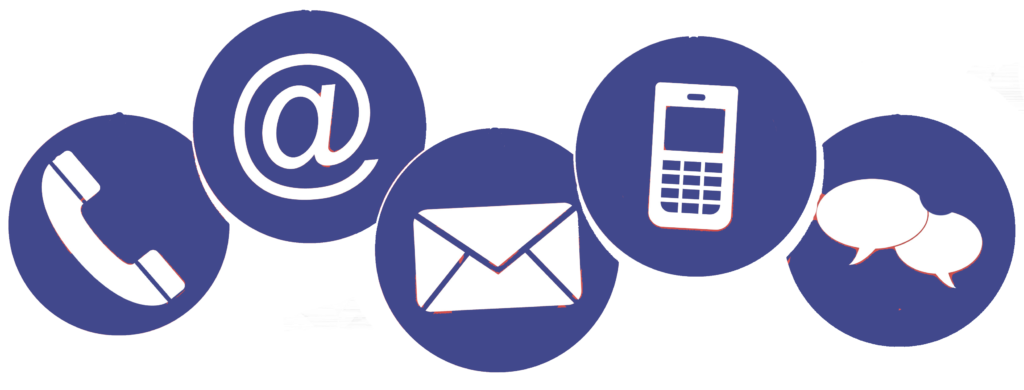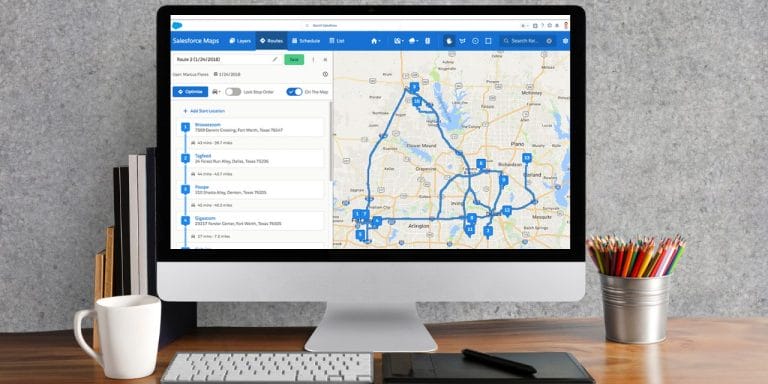The COVID-19 pandemic has completely changed the way we live, work, and interact with each other. The last couple of months have been extremely difficult for many people. If you work in field sales, you know this first hand.
Some outside sellers have been able to adapt by shifting their focus to virtual field sales. Others decided it was better to close up shop and cease operations until the storm passed.
Now that the worst of the virus is behind us, it’s time to think about getting your field sales team back to work. The landscape is different now. Many experts expect a recession. The good news is, growth and increased profitability is still. Don’t believe us? Just ask the 14% of companies who’ve excelled during the last four economic downturns.

At SPOTIO, we’re in a unique position because of our relationship with hundreds of companies in dozens of industries around the world. This has allowed us to gain valuable insights about how best-of-breed businesses are acting and reacting post COVID-19.
Using these insights, we’ve created a checklist to help you get your sales team back on track.
Get Your Sales Team Back on Track
What can your outside sales team do to get back on track post COVID-19? Follow the checklist below. The nine tips and tricks we mention will help you make up for lost time, regain productivity, and hit new revenue numbers.
Let’s dive in…
1. Make Safety a Priority
No matter what you do, make sure safety is a top priority — both for your field sales team and the prospects they book meetings with. Here are a few tips:
Follow Local Guidelines: What has the government in your area deemed acceptable behavior? These guidelines have been put in place for a reason. Please follow them! That may mean wearing a mask in public places, staying six feet away from others at all times, wearing gloves… Learn the guidelines in your region.
Consider Prospect Comfort: Just because local authorities say it’s okay to meet in public again, doesn’t mean all of your leads are ready to take this step. Respect your prospects’ wishes. If they would rather reschedule a meeting, reschedule it. If they ask you to wear a mask or gloves while in their office, honor the request.
Wash Your Hands: One of the best ways to prevent further spread of the virus is to frequently wash your hands. Any time you meet with a prospect, take the time to clean yourself properly. This is a simple step that any field sales professional can complete.
2. Understand the Market
As mentioned, the COVID-19 pandemic has been extremely difficult for many people and their businesses. Not every company has the funds to purchase your product and/or service right now. That’s why it’s important to understand your market and focus your sales efforts on the organizations that are currently thriving.
You can tell which businesses are most likely to purchase your products by researching the industry, whether or not the company in question is hiring and/or active on social media, and by the amount of content it’s producing.
3. Evaluate Your Business Plan
In all likelihood, your business had to pivot during the COVID-19 outbreak and forced quarantine period. The question now is, should you stay pivoted, go back to your pre-virus business plan, or create a hybrid approach?
Think about the new marketing channels you’ve been using, products and/or services you’ve begun offering, and the sales methods you’ve adopted over the past few months. How many of them are still relevant in a post COVID-19 world? Your answer will tell you which business plan (pivot, pre-virus, or hybrid) to use going forward.
We should mention that the virtual sales tactics you’ve been using lately will almost certainly be useful to you in the future. The ability to reach prospects in far away places and demo products for them via video software is quite valuable.
4. Retrain Your Staff
If you’re changing your business plan to adapt to the post COVID-19 environment, you may need to retrain your staff. How else will they become accustomed to the new processes and workflows you’ve developed?
Make training a priority! If your employees don’t understand how to do their jobs productivity will suffer, team morale will plummet, and company turnover will increase. Since turnover expenses can range from 16% to 213%, depending on the position being vacated, we suggest you invest in staff training to help avoid the high cost of worker replacement.
5. Use a Multi Channel Sales Approach
Multichannel sales is the practice of contacting and engaging prospects in a variety of ways. For example, a seller can visit a prospect in person, call or text them on the phone, or send them an email. Each of these channels can be effective sales tools when used correctly.
Roughly 80% of the businesses we’ve talked to say they plan to continue using a multichannel sales approach because of the benefits, which include:
Greater Customer Satisfaction: Not every prospect appreciates in-person meetings. By contacting them in a variety of ways, you can ensure each potential customer can communicate with you in the way they want, which will increase satisfaction and loyalty.
Higher Revenue Numbers: Greater customer satisfaction generally leads to higher revenue numbers because people are more comfortable buying from companies they know, like, and trust. Communicate with your audience via their preferred channel and enjoy more sales and higher revenue numbers.
Better Team Productivity: Lastly, multichannel sales often leads to greater productivity. It takes a lot of time and effort to meet a prospect in person. If you can reduce your face-to-face meetings and replace them with quick phone calls, emails, and texts — while maintaining an acceptable conversion rate — you’ll be more productive.
The pandemic forced many field sales representatives to adopt remote selling strategies and develop a multichannel sales approach. After all, you weren’t able to visit prospects in person, so you needed to call, text, and/or email them instead.
If at all possible, continue to use multiple channels to reach your audience. That way you can experience the benefits listed above.
6. Discover New Prospecting Opportunities
The worst of COVID-19 seems to be behind us. But it may be some time before you and the rest of your outside sales team are back in the field meeting with potential customers full-time. This means that you need to discover new prospecting opportunities.
Fortunately, technology makes it easy to find contact information online for almost anyone — including the folks in your industry who’re ready to buy your products.
Here are a couple of resources you can use:
LinkedIn Sales Navigator: LinkedIn Sales Navigator is a great prospecting tool that helps users target specific buyer personas, discover and understand key details, and engage leads with personalized messages. Since LinkedIn has over 575 million users, there’s a lot of people on the network that you can send sales pitches to.
Google My Business: With Google My Business, you can quickly create a great Google listing for your business that’s easily found on Google.com and included in Google Maps. The tool is completely free and will give you access to millions of potential customers.
The WhitePages App: Whitepages is the largest and most trusted online directory in the world. You can use it to pinpoint the contact information of your prospects by typing in their personal or business names, addresses, phone numbers, and more.
Lead Machine: Lead Machine is a SPOTIO product that allows field sales teams to generate quality leads in seconds. All our users have to do is draw their target territory on the in-app map, build an ideal customer profile using 50 potential data points, and then import the leads that SPOTIO generates.

7. Analyze Past Data
As a sales person, you probably have a list of “not yet ready” leads. You know, the folks who expressed interest in what you sell, but weren’t quite ready to pull the trigger and make a purchase when you last talked to them.
Now is a great time to analyze past data and re-engage these prospects with sales messages. Who knows? Maybe they’ve suddenly realized they can’t go another day without your company’s offerings, or now have the funds to make a purchase.
We suggest contacting the people who seemed closest to a sale first. Then work backwards, ending at the businesses or homeowners in closest proximity to your existing customers.
8. Invest in New Technology
In-person meetings were out during the COVID-19 shutdown, so proactive field sales reps adapted to their circumstances by investing in new technology. For many sales teams, online video and social selling became a part of their daily workflow for the very first time. Others invested heavily in email marketing and cold calling campaigns to make sales.
 We may be able to meet with prospects face-to-face now, but digital communication strategies aren’t going anywhere. You should consider investing in new technologies, if you haven’t already, that allow you to better communicate with your customers and boost productivity.
We may be able to meet with prospects face-to-face now, but digital communication strategies aren’t going anywhere. You should consider investing in new technologies, if you haven’t already, that allow you to better communicate with your customers and boost productivity.
9. Be Active
Finally, it’s important that you’re extremely active post COVID-19! Now isn’t the time to sit back and relax. We need to roll up our sleeves, climb back into the trenches, and work hard to make sales. If we don’t, we’ll have a hard time closing deals.
Your prospects are aching for life to get back to normal. But that doesn’t mean they have the funds to invest in your products. Depending on your industry, you might have to work extra hard to meet sales quotas as companies shrink budgets to help them recover from the financial impact of COVID-19. Don’t let this discourage you!
Organizational spending will eventually return to normal. Even if you don’t make as many sales right now, you can plant seeds and build relationships that will help you make more sales in the future.
Own the “New Normal”
There’s no doubt about it, the world looks different now than it did six months ago. As you and your company adjust to the “new normal, keep the above checklist in mind. It will help your field sales team make up for lost time, regain productivity, and hit new revenue goals.
Good luck!







